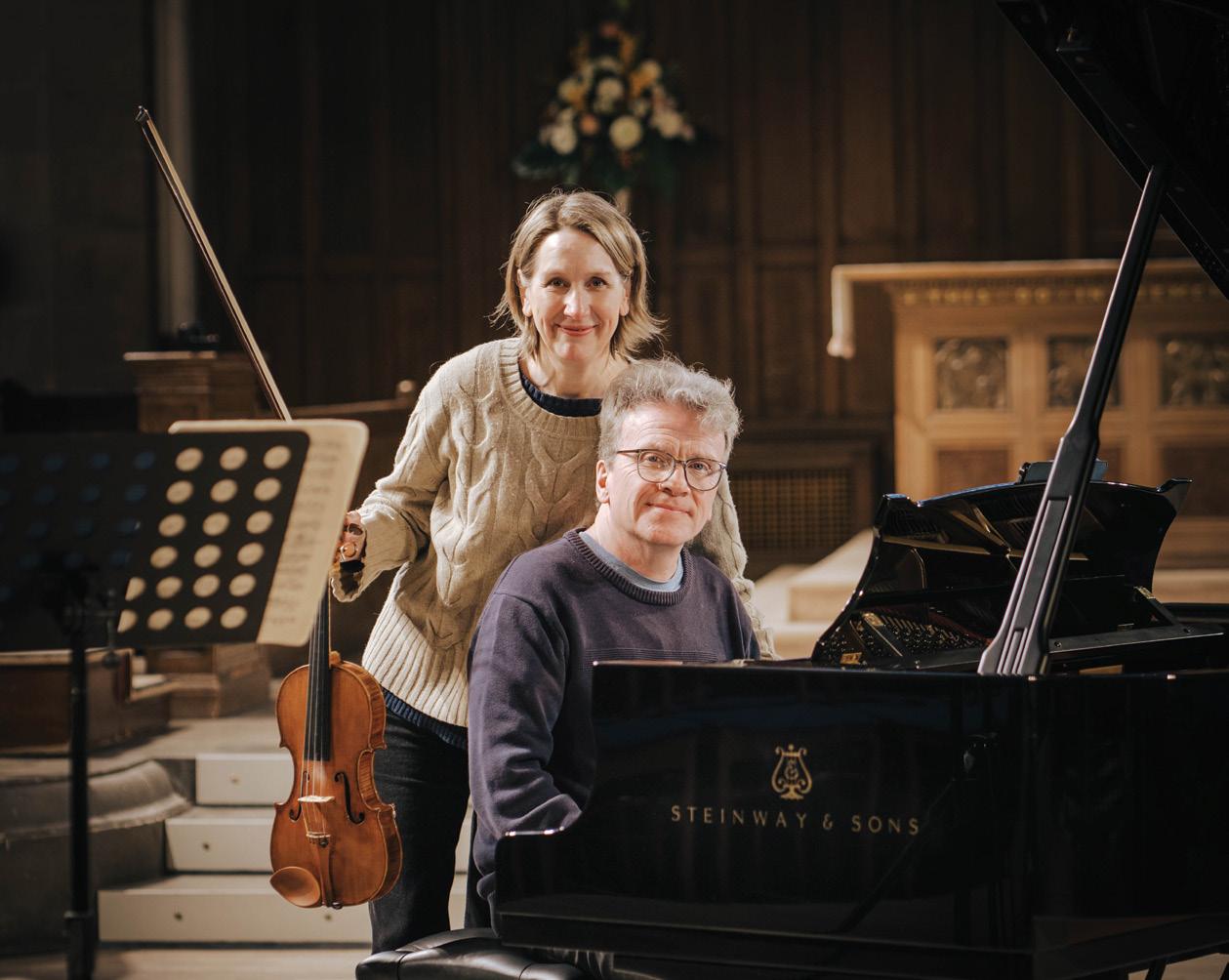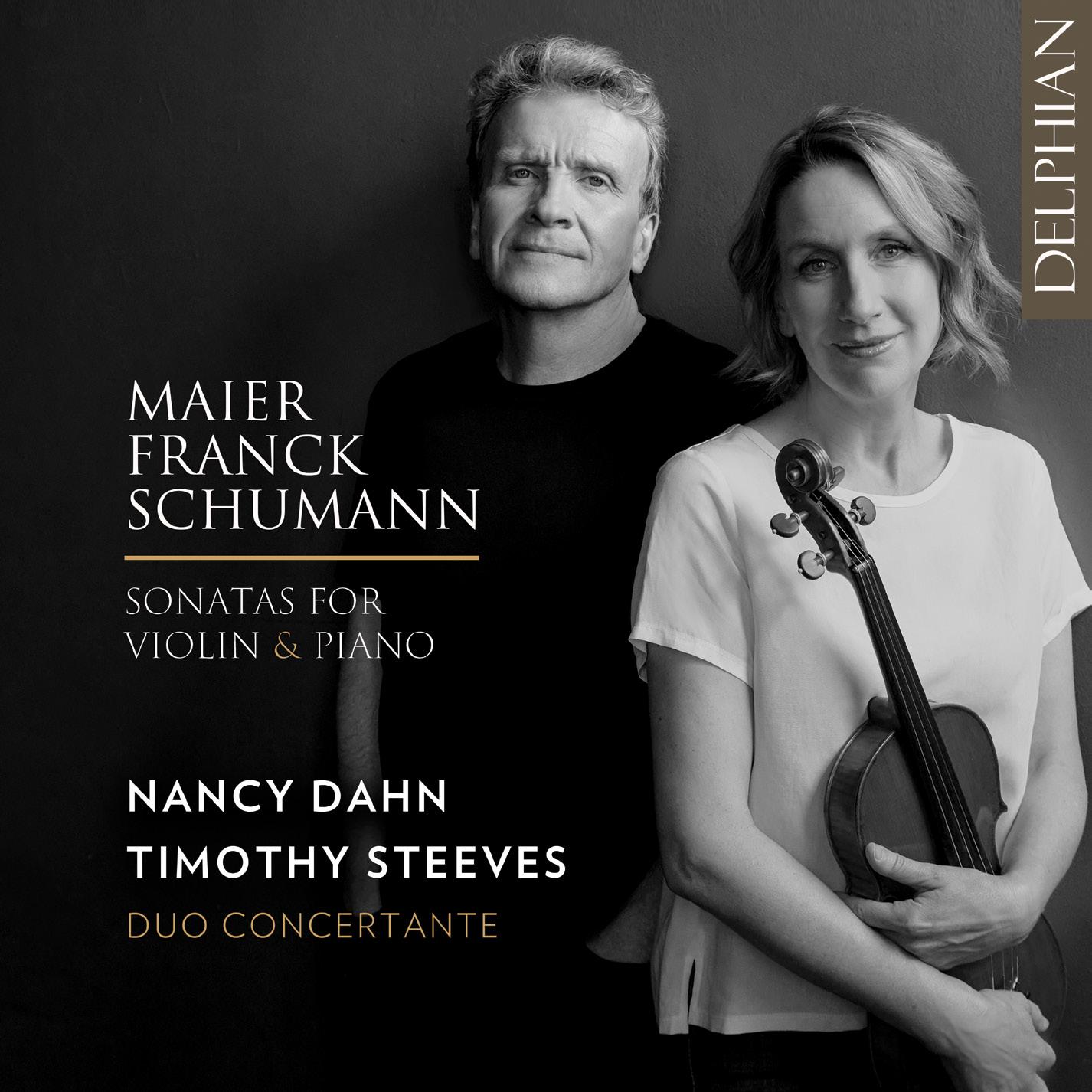

MAIER franck schumann
SONATAS FOR VIOLIN & PIANO
NANCY DAHN
TIMOTHY STEEVES DUO CONCERTANTE


Robert Schumann (1810–1856) Violin Sonata No. 1 in A minor, Op. 105
Amanda Maier (1853–1894) Violin Sonata in B minor, Op. 6
César Franck (1822–1890) Violin Sonata in A major
Recorded on 20-22 May 2024 in Greyfriars Kirk, Edinburgh
Producer: Paul Baxter
Engineer: James Waterhouse
24-bit digital editing: Jack Davis
24-bit digital mastering: Paul Baxter
Piano: Steinway model D, serial no 600443 (2016)
Piano technician: Norman Motion
Design: Eliot Garcia
Booklet editor: Henry Howard
Cover photo: Tim Leyes
Session photography: Will Coates-Gibson/ Foxbrush
Delphian Records Ltd – Edinburgh – UK www.delphianrecords.com
The three sonatas featured on this album, composed between 1851 and 1886, trace the outlines of a remarkable period of musical evolution. By this time, the sonata as a genre had loosened its emphasis on balanced Classical forms and idealised representations of emotion. Now, violin sonatas in particular offered an intriguing vehicle for the Romantic era’s interest in individual expression: the violin and piano, each more than capable of standing alone, could come together to tell compelling narratives in dialogue or as a united duo. The dramatic possibilities of this interplay not only led to some of the most memorable violin sonatas ever written, but also provided fascinating glimpses into their composers’ lives.
Having weathered an increasingly concerning set of challenges to his mental and physical health, Robert Schumann moved to Düsseldorf in 1850 to serve as the city’s municipal music director. The post came with relative financial security and the possibility of a fresh start. Buoyed by an exceptionally warm welcome from the community, the composer’s first year in the city produced fine work, including the Cello Concerto and the Symphony No. 3, ‘Rhenish’ Sadly, the move to Düsseldorf also marked the beginning of his final period of musical activity. By 1854, Schumann’s physical and mental health took a marked downturn. He requested admission to a sanatorium near Bonn, where he would die, aged forty-six, on 29 July 1856.
Schumann composed the Violin Sonata No. 1 in A minor, Op. 105 (1851) over the span of just four days during his productive early time in Düsseldorf. His intentions for the work are made abundantly clear at the top of the first movement, which is titled Mit leidenschaftlichem Ausdruck – ‘with passionate expression’. Tellingly, Schumann commented to the violinist Wilhelm Joseph von Wasielewski that the Sonata had been written while he was ‘very angry with certain people’. The expressive trajectory of this work is far too rich and varied to be summarised as simply a portrayal of anger, but Schumann’s efforts helped to push the sonata idea beyond its historically formal compositional structures into a rawer and more visceral account of human emotion.
Schumann’s experiments in this direction are notable for their dramatic impact, but also for the ways in which they prefigure later violin works in both expressive intent and compositional approach. Of particular note is Schumann’s economical and cyclic use of musical themes. Taking the first movement of the Violin Sonata No. 1 as an example, the first and second themes share similar moods and shapes, a more organic relationship than the strongly contrasting themes of Classical ideals. Rhythmic and melodic aspects of the same thematic material appear repeatedly in accelerated or expanded versions throughout the first and second movements before making an especially dramatic reappearance
as a direct quote in the third movement. This approach, though somewhat restrained compared to later composers’ use of the cyclic technique, creates a sense of unity and continuity across all three movements.
Schumann was both respected and well connected, factors which helped keep his works in artistic circulation after his death. His gestures toward thematic economy and cyclical treatment can be seen resurfacing in more developed forms in the works on this album by Amanda Maier and especially César Franck. Though Schumann’s palpable emotional vulnerability caused him significant distress in life, it also helped him to cast the violin sonata as an impactful vehicle for the personal emotional narrative of the composer. Through performance, this narrative also becomes a part of the personal story of the performers.
By the time the Swedish-born Amanda Maier moved to Leipzig to study in 1873 at the age of twenty, she was already an accomplished organist, violinist and composer. Immersed in the storied local culture – where the names of Bach, Mendelssohn and the Schumanns were only a partial account of the city’s contributions to music – Maier flourished as a performer and composer. She studied composition with Carl Reinecke (director of the Gewandhaus Orchestra), became close friends with the English composer and
suffragette Ethel Smyth, and began studies in violin with the Gewandhaus concertmaster, Engelbert Röntgen. The Röntgen family soon invited Maier into daily life, where she met Engelbert’s son Julius Röntgen. Maier and the younger Röntgen became friends and soon more, falling into both love and a lifelong habit of workshopping and performing their compositions together. Following a few years of intensive concert touring for Maier, the couple married in Sweden in 1880. Maier’s musical ambitions never halted entirely, but there was little precedent for the musical community supporting the performance career of a married women. This systemic misogyny, combined with the demands of motherhood and poor health, marked Maier’s transition to a slower compositional output and performances only for private audiences.
The Violin Sonata in B minor, Op. 6, while not explicitly programmatic or autobiographical, resonates with an especially vibrant period in Maier’s life. She wrote the Sonata over a lengthy period in 1874 and 1875, during which she workshopped it extensively, taking the violin part herself, with Julius Röntgen at the piano. The first movement Allegro opens restlessly, with a roiling piano part beneath a wistful and searching violin; both eventually explore more rhythmically emphatic ideas. The lilting Andantino – Allegretto, un poco vivace begins with an easy folk-like simplicity. Arresting but fleeting dissonances in the piano lead
a transition into a faster section where a motoric and intricate piano part briefly brings unexpected shades of Bach. The final Allegro molto vivace is a rondo alternating exciting, offbeat-driven motives with lyrical and idyllic interludes.
In what is one of Maier’s earlier works, her major compositional influences are detectable close beneath the surface. The presence of Schumannian features, in particular, is hardly a coincidence: Schumann was still a living memory in Maier’s Leipzig, largely through the efforts of her composition teacher Carl Reinecke, a former student of his. Schumann’s First and Second Violin Sonatas also appear among Maier’s known performance repertoire as a violinist. Nevertheless, Maier’s approach is distinctly her own. A heightened emphasis on lyricism and compositional balance is, perhaps, a reflection of the work’s extended period of refining. In recognition of its merit, the Sonata was awarded a prize by the Swedish Art Music Society (Musikaliska Konstföreningen). The prize included publication of the Sonata, ensuring that this important work survived for deserved, if delayed, recognition alongside other milestone Romantic violin sonatas.
The Belgian-born composer César Franck transcended a challenging early career to become one of Paris’s most influential organists, teachers and composers. Franck wrote the Sonata in A major in 1886 for the wedding of the virtuoso Belgian violinist Eugène Ysaÿe, who received the manuscript
as a surprise gift on the morning of his marriage. He and the pianist Marie-Léontine Bordes-Pène speedily rehearsed and performed it for the wedding guests that very day – a testament to the skill of both performers, given the Sonata’s notoriously difficult technical demands.
Like his contemporary Johannes Brahms, Franck appreciated counterpoint and Classical forms without entirely rejecting the extended harmonies and looser formal structures explored by Wagner, Liszt and their followers. By this point in music history Franck was under no artistic obligation to choose the sonata genre at all: there was already ample precedent for chamber works for violin and piano employing more ambiguous forms. To write a violin sonata in this context was to make a conscious decision to engage with – and build upon – a specific set of forms, audience expectations and historical pedigree. Franck’s approach was to repeat, reference and develop a small set of compact thematic materials from which he spins out a work of considerable grandeur and scale staged across four movements.
The dreamlike Allegretto ben moderato first movement serves as a kind of prologue and an introduction to the Sonata’s main thematic materials, before a turbulent and emotive Allegro movement in traditional sonata-allegro form, sometimes termed the ‘real’ first movement of the work.
The freely improvisatory nature of the Recitativo-Fantasia movement leads to a joyous Allegretto poco mosso movement in which the violin and piano engage in canonic imitation and an evocation of the tradition of rondo form. In contrast to Schumann’s more circumspect employment of cyclic traits in his Sonata No. 1, the motifs in Franck’s work operate in both foreground and background. They are immediately identifiable as ‘hooks’ to the listener, yet also underpin and pervade the form on a structural level, providing depth on repeat hearings.
The Sonata’s generosity of expression and unfailingly songlike melodies have led to a popular narrative in which movements of the work are imagined as episodes telling the story of a couple who meet, fall in love, and marry to the sound of wedding bells. There is little evidence to suggest that Franck had that specific story in mind, though in Ysaÿe’s extensive touring of the work he professed to play it con amore as a testament to its origins. In Ysaÿe’s celebrated hands the piece was quickly cemented as a mainstay of chamber music repertoire. Only a few years after its premiere, in 1893 Franck’s Sonata was performed at a private concert in Denmark by Amanda Maier with her husband; it was to be one of their final performances together.
© 2025 Arlan Vriens
Arlan Vriens is an adjunct professor at OCAD University and a postdoctoral fellow at the University of Toronto. His research and performance focuses are in early and contemporary music for the violin.
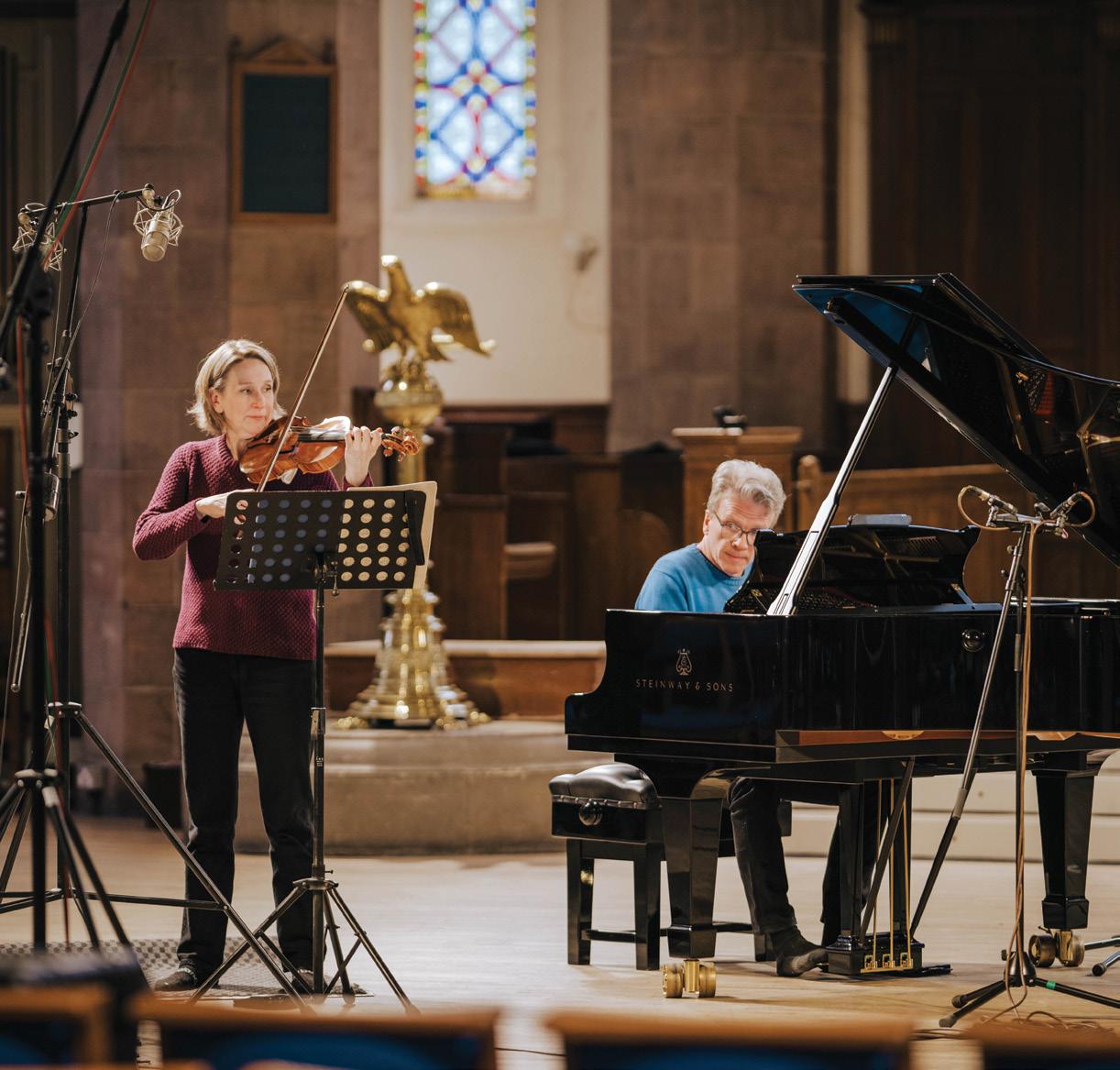
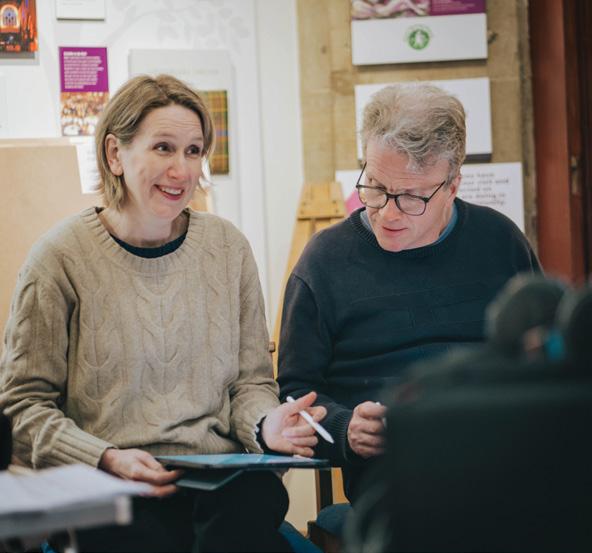
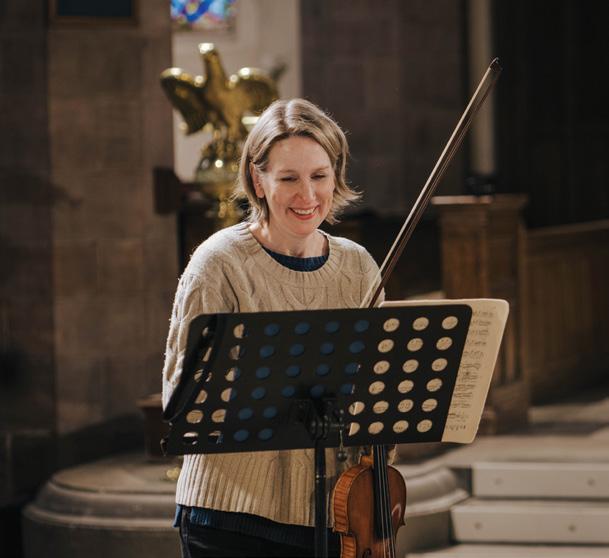
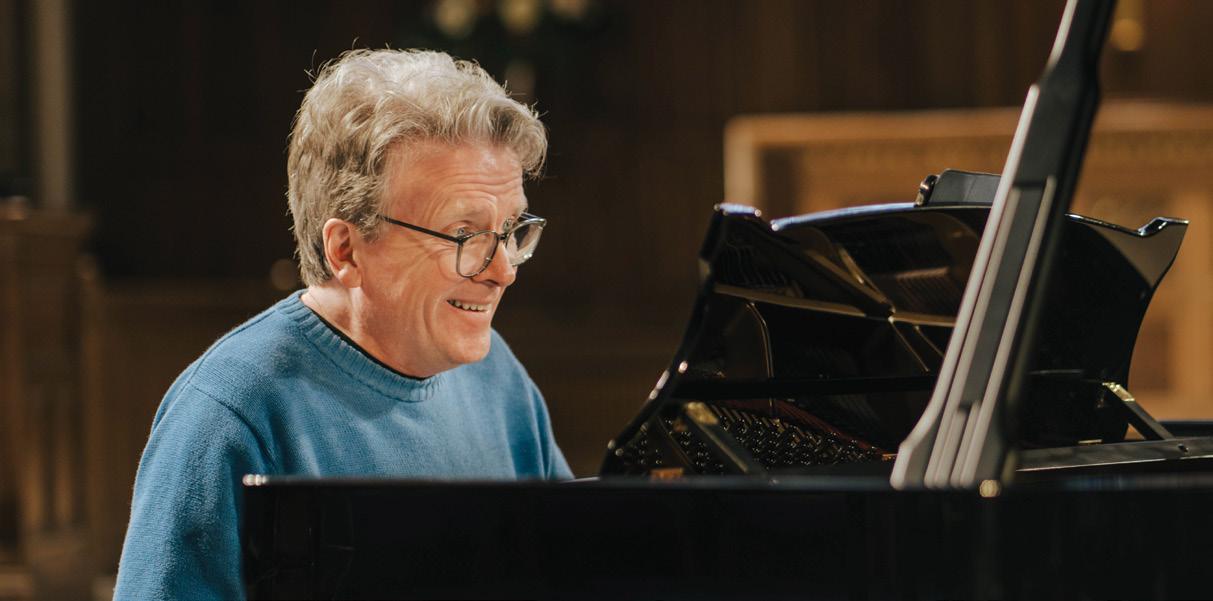
For over two decades, violinist Nancy Dahn and pianist Timothy Steeves have built an international career as artistic and life partners in the ensemble Duo Concertante Taking their name from the inscription over Beethoven’s ’Kreutzer’ sonata, ‘in stilo molto concertante’, which implies a relationship of two equal, dynamic voices, Duo Concertante have forged a musical legacy as awardwinning performers, champions of new music, visionary artistic directors and inspiring mentors, and strive to provoke thought and engagement through their art. After their first concert in 1997, the Halifax ChronicleHerald called Duo Concertante ’two packages of musical dynamite that would credit any stage on the planet’. Since then, they have performed more than 700 concerts across North America, Europe, Central America and China in venues including Wigmore Hall (London), Carnegie Hall’s Weill Recital Hall (New York City), Shanghai City Theatre, the Los Angeles County Museum of Art, Roy Thomson Hall and the Four Seasons Performing Arts Centre (Toronto), the National Arts Centre (Ottawa), and the Forbidden City Concert Hall (Beijing).
Duo Concertante’s 13 award-winning recordings include Beethoven’s complete Sonatas for Violin and Piano, which was described by Gramophone as ‘a miracle of … knowledge and poetry’, while the leading Canadian critic John Terauds said ‘these beautiful interpretations are so good right down to the tiniest of details that they deserve to be called a reference in … contemporary performance’. Their other recordings include Incarnation, one of CBC Radio’s Top 10 Classical Recordings of 2017, and 2011’s JUNO-winning Wild Bird. 2025 sees the release of Dark Tales, a commissioned piece by Alice Ho based on Newfoundland ghost stories, recorded on the PARMA label in the United States.
In addition to their dedication to the rich canon of standard repertoire, Nancy and Timothy have commissioned over 70 new works from Canada’s leading and emergent composers. Their devotion to ‘citizen artistry’ synthesises the performing arts with issues important to them personally, such as environmentalism and mental health, seen in such recent projects as Ecology of Being and Taking on Water.
Since 2020, Duo Concertante have also been active creating unique music videos, such as Melissa Hui’s work from the Ecology of Being project, which was made into a 21-minute film and won Best Experimental Film and Best Original Score at the 2020 IndieX Filmfest (Los Angeles). In 2022, the Duo created SOLACE – four films with music by Dawn Avery, Alice Ho, Jessie Montgomery and César Franck. The Jessie Montgomery film, End of the Line, was an award winner at the Los Angeles Women’s Independent Film Festival.
Fellows of the Royal Society of Canada, Nancy and Timothy are also the founding Artistic Directors of the Tuckamore Festival, now a major attraction where for two weeks every summer, international artists and students gather in beautiful St. John’s, Newfoundland and Labrador for intense chamber music workshops, coachings and performances.
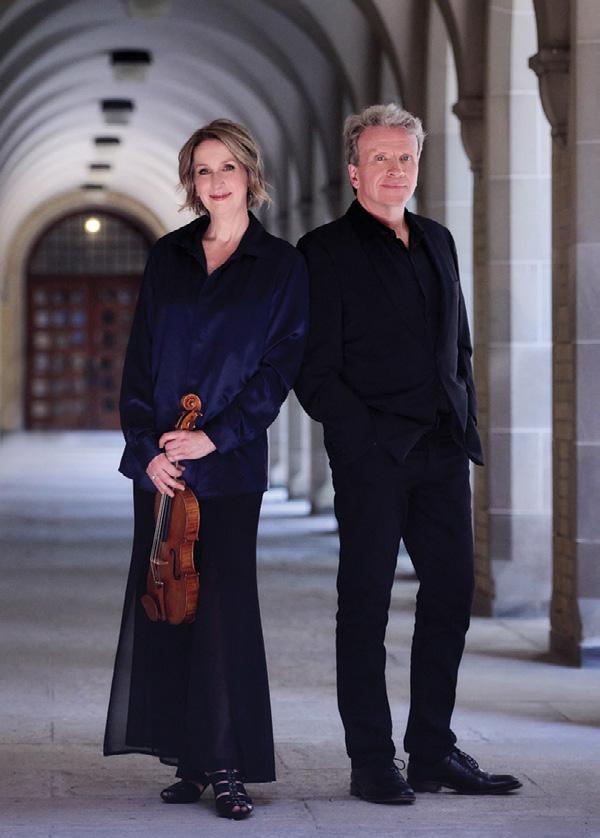
Photo credit: Tim Leyes
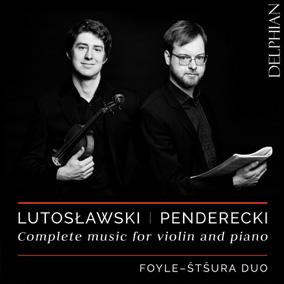
Lutosławski / Penderecki: Complete Music for Violin and Piano
Foyle–Štšura Duo
DCD34217
Repression and censorship; optimism and freedom; renewed constraints. If this sounds like a now all too familiar story of political progress achieved and then reversed, Michael Foyle and Maksim Štšura’s compelling survey of chamber works by two of Poland’s leading postwar composers attests that music was there to bear witness to each twist and turn of the tale. Journeying from the post-Stalin thaw of the 1950s and 1960s, through the triumphant re-establishment of democracy and on to the century’s ambivalent end, these vital utterances range from the exploded intensities of Penderecki’s Three Miniatures to the lean, focused expressive charge of Lutosławski’s Partita and the millennial anxieties of Penderecki’s Violin Sonata No 2.
‘The programme is illuminating in its contrasts and for what it reveals about these two very different figures … Foyle and Štšura handle it with commanding aplomb’ — BBC Music Magazine, April 2019
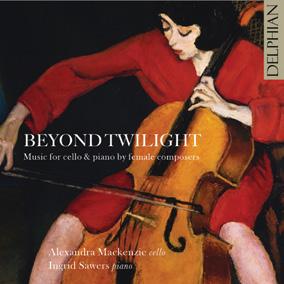
Beyond Twilight: music for cello & piano by female composers
Alexandra Mackenzie, Ingrid Sawers
DCD34306
Furthering their longstanding interest in unfamiliar repertoire, cellist Alexandra Mackenzie and pianist Ingrid Sawers have unearthed for this album a treasure trove of short pieces by female composers, some hiding behind bland initials such as ‘A. E. Horrocks’. Dating from the 1880s to the 1950s, these intimate, quietly powerful works include miniatures by the Scottish cellist Marie Dare and two delightful songs by Gwendolen (later Avril) Coleridge-Taylor, here newly transcribed for cello. A total of fourteen works are presented, all but five in premiere recordings.
‘Mackenzie plays with appropriate panache’ — BBC Music Magazine, Christmas edition 2023

Beau Soir: Debussy – Satie – Ravel – Poulenc (YCAT Vol 6)
Maciej Kułakowski, Jonathan Ware
DCD34277
Acclaimed young cellist Maciej Kułakowski (Lutosławski International Cello Competition 2015, First Prize; Queen Elisabeth Competition 2017, Laureate) is partnered by pianist Jonathan Ware in an all-French recital programme that mingles the familiar with the reimagined. Elements of ‘Spanish’ style, blues and jazz, and the ironic humour of the Parisian café, encountered in sonatas by Debussy, Poulenc and Ravel (Kułakowski’s cello rendering of the latter’s Second Violin Sonata), are echoed in a brace of shorter works that includes several further transcriptions – of three short pieces by Debussy and of Satie’s Trois Gnossiennes.
‘Cellist and pianist convey the meaning of every crescendo or change of tempo, however minimal, proving that tiny details can have huge effects ... The “wackiness” of Debussy, Ravel and Poulenc has rarely been better demonstrated’ — BBC Music Magazine, December 2022, five stars
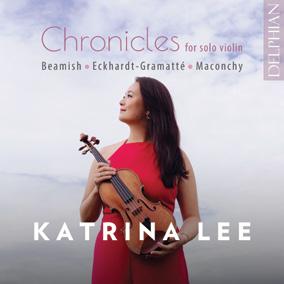
Katrina Lee
DCD34338
For her debut solo album, violinist Katrina Lee has set out to celebrate and bring to light the voices of three female composers in solo works for her instrument. The Ten Caprices by Sophie-Carmen EckhardtGramatté, who was hugely prominent during her own lifetime, bring together dedications to loved ones, reflections on death and illness, and memories of places from the composer’s wide-ranging life.
Elizabeth Maconchy’s music is gaining increasing recognition, and here Lee unveils a set of unpublished Miniatures. Sally Beamish’s The Wise Maid provides light relief through its virtuosic interpretation of an Irish folk tune.
Chronicles for solo violin: Beamish – Eckhardt-Gramatté – Maconchy

1919: CODA (Janácek – Boulanger – Debussy – Elgar)
Benjamin Baker violin, Daniel Lebhardt piano
DCD34288
The works on this recording speak from a decade of both musical and world-historical change. Claude Debussy and Lili Boulanger both died in 1918, two extraordinary careers cut short early; the programme includes some of their last works. Edward Elgar lived on for another fifteen years, but wrote little more to match the four major compositions which emerged from his pen in 1918 and 1919. Leoš Janácek, by contrast, was about to enter an astonishing Indian summer of creativity; his Violin Sonata stands on the cusp.
‘Baker and Lebhardt, who listen and respond to each other precisely and sensitively, are ideal and impassioned guides’ — The Observer, May 2023
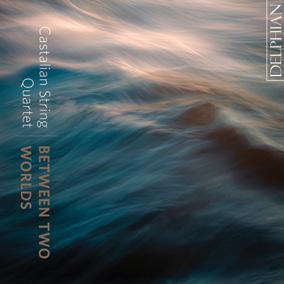


Between Two Worlds (YCAT Vol 5)
Castalian String Quartet
DCD34272
From the darkness of night emerges day, the cycle of nature tracing the journey of the soul. The finely calibrated emotions of Orlande de Lassus’s song La nuit froide et sombre, and of his near-contemporary John Dowland’s Come, heavy sleep, are made newly vivid in transcriptions by the Castalian String Quartet, framing a programme which exists both inside and beyond time. Profound meditations on immortality and worldliness from Beethoven and Thomas Adès receive readings of extraordinary intensity, the Quartet’s burnished tone and astounding interconnectedness making this a debut that demands to be heard.
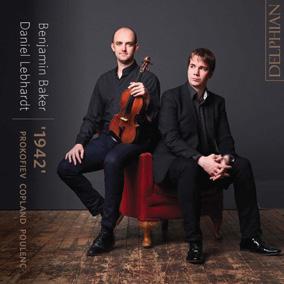
‘1942’: Prokofiev – Copland – Poulenc (YCAT Vol 3)
Benjamin Baker, Daniel Lebhardt
DCD34247
Since winning First Prize at the 2016 Young Concert Artists International Auditions in New York, New Zealand-born violinist Benjamin Baker has established a presence across the globe, with acclaimed solo, chamber and concerto appearances on five continents. His Delphian recording debut sees him joined by regular duo partner Daniel Lebhardt in a programme of three powerful works which were all begun in 1942. Each marked in its own way by a world at war, these sonatas show three of the twentieth century’s most individual composers engaging themes of private loss, political uncertainty and music’s enduring ability both to reflect and to transcend circumstance.
‘Baker and Lebhardt are superb partners, with a rare passion and energy’ — Apple Music, April 2021
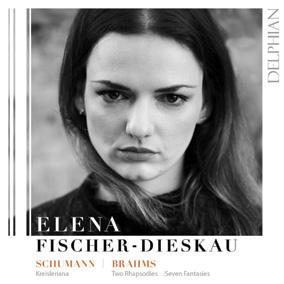
Schumann / Brahms
Elena Fischer-Dieskau
DCD34255
Clara Wieck, who in 1840 was to become Clara Schumann, was a significant figure in the lives both of her husband Robert and of Johannes Brahms, to whom the Schumanns became mentors.
The double inspirations of Clara and of the writer E.T.A. Hoffmann’s fictional Kapellmeister Johannes Kreisler are the connecting threads on this debut recording by pianist Elena Fischer-Dieskau, in which Robert’s capricious, moody Kreisleriana is joined by two sets of piano pieces by Brahms.
‘To hear this music, so full of poetry, joy and sorrow, realised to such perfection, felt like a miracle’ — The Observer, January 2020
‘With a name like Fischer-Dieskau, this young pianist has a lot to live up to. But the granddaughter of the famous baritone need not worry, for she holds her own, and then some, in this engaging programme’ — BBC Music Magazine, November 2021
